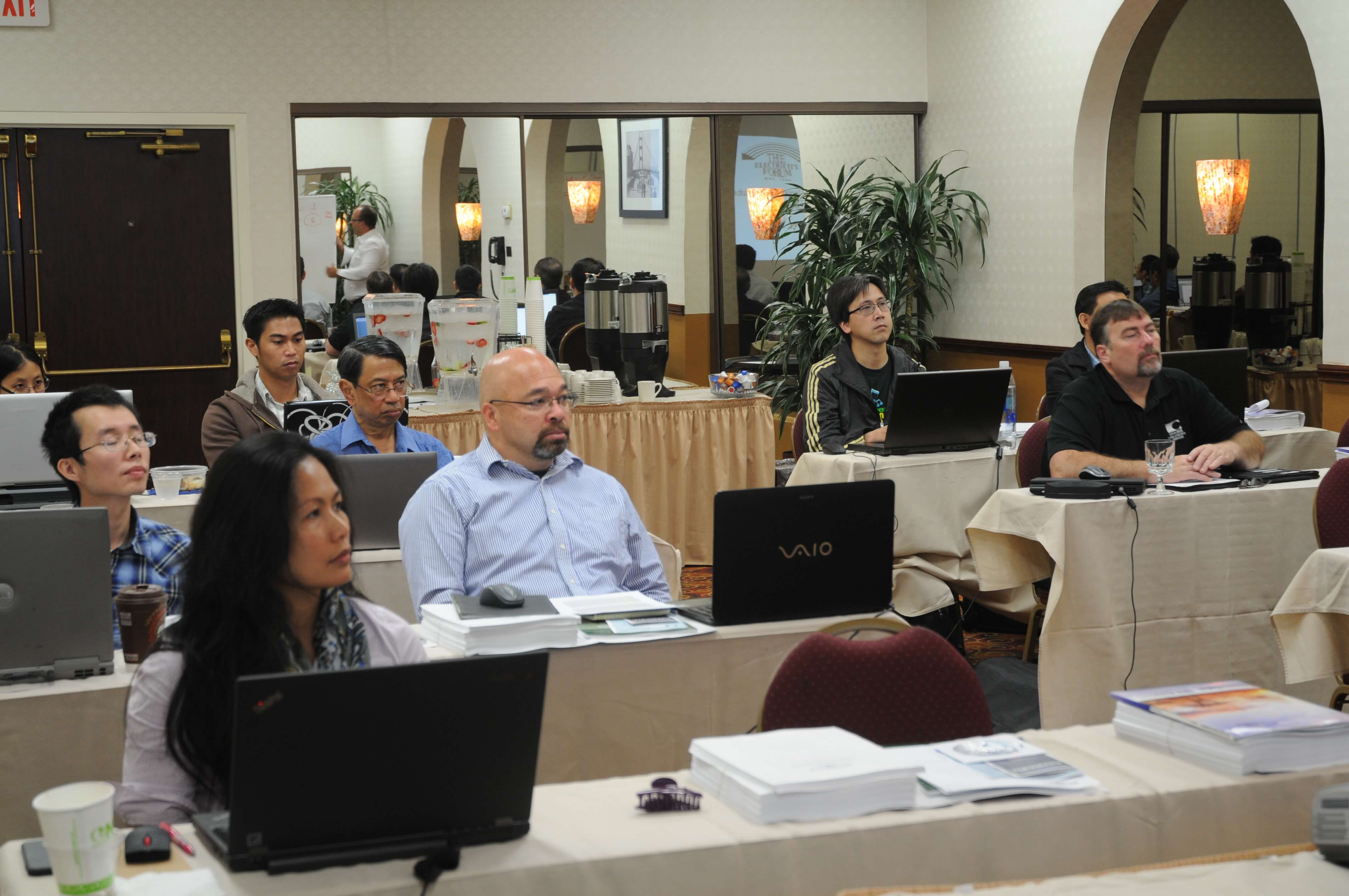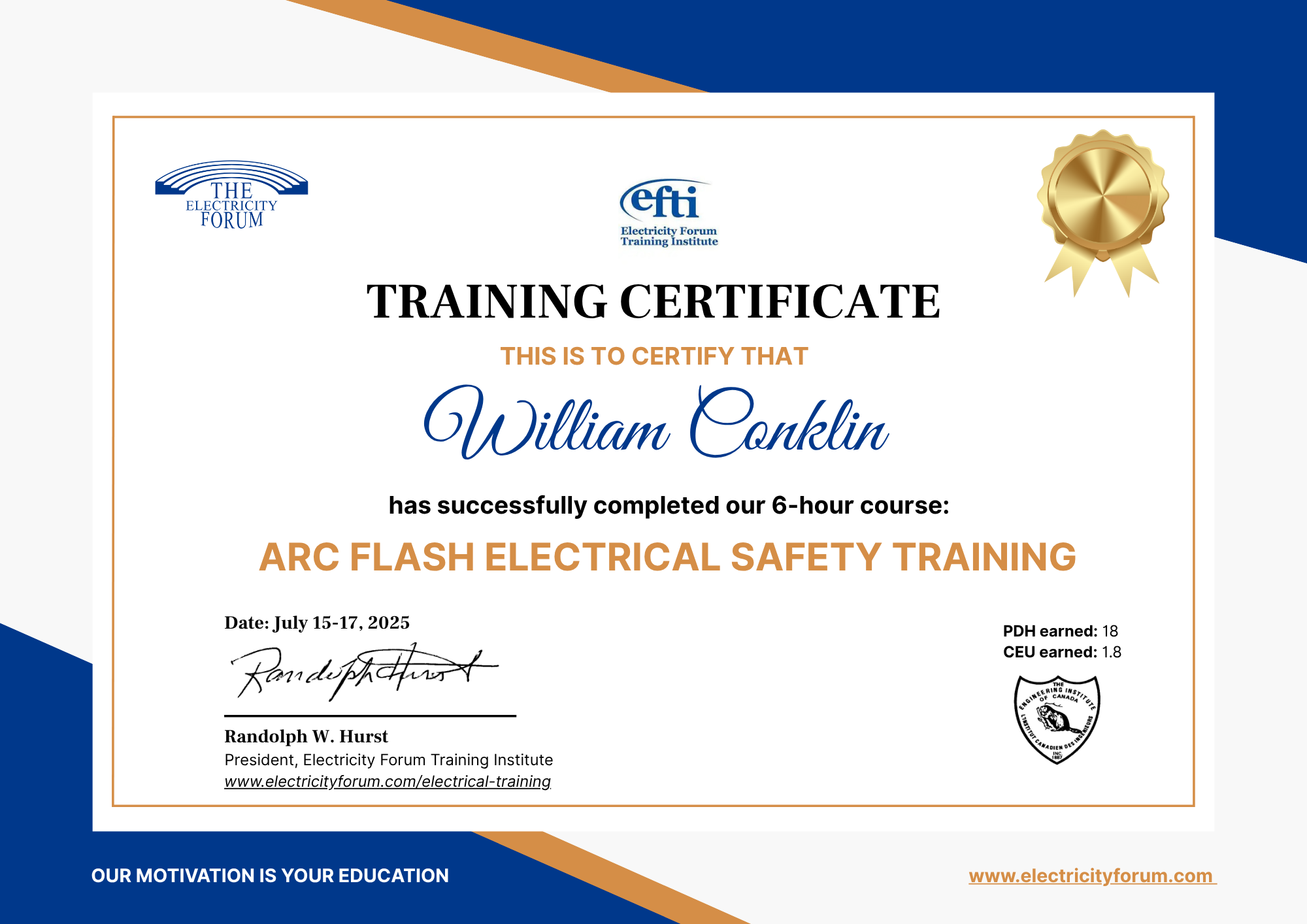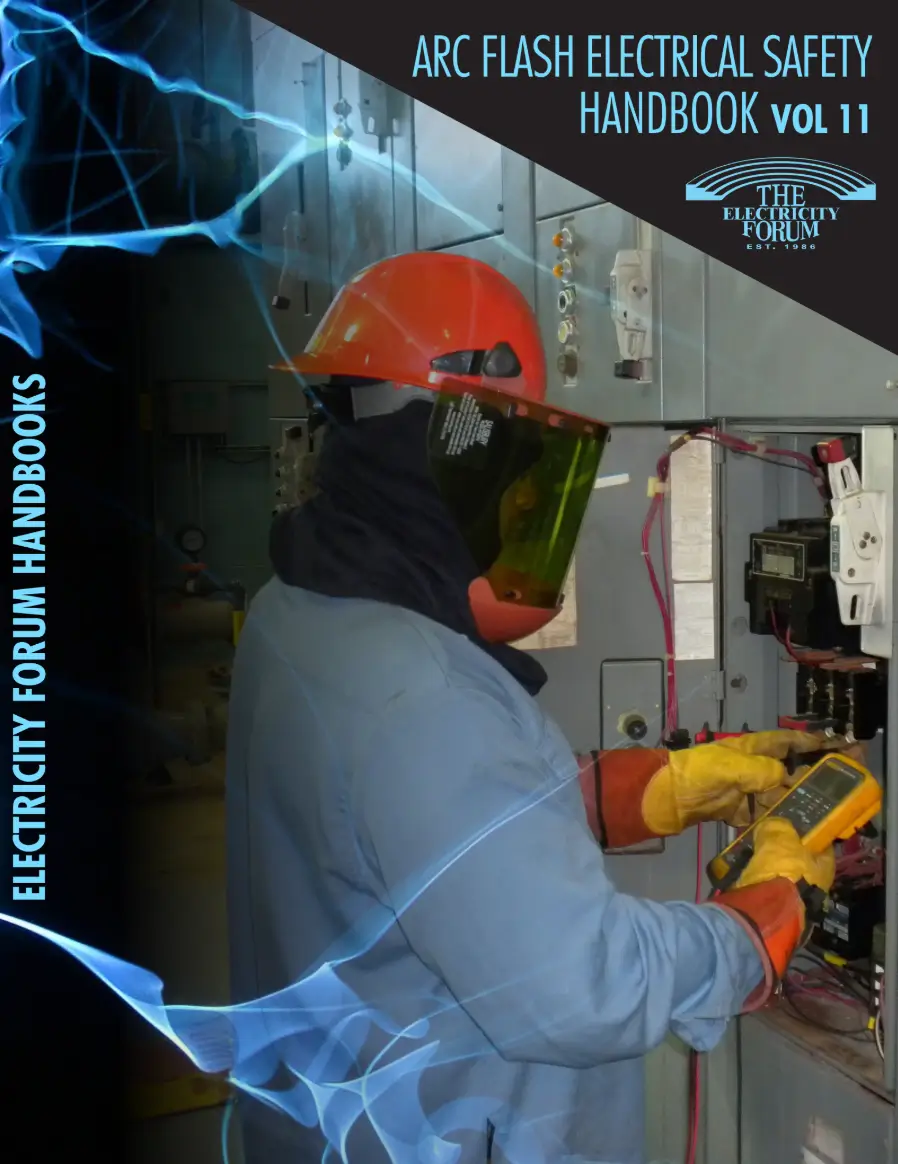This CSA Z462 Arc Flash Training course is tailored for electrical professionals seeking to enhance their understanding of arc flash hazards in accordance with CSA Z462. Delivered live online over six hours, the course covers risk assessment, safe work practices, and emergency response procedures.
Students will learn to identify potential electrical hazards, establish protection boundaries, and select appropriate personal protective equipment (PPE). Upon completion, attendees will receive a certificate of completion, reinforcing their commitment to workplace safety and compliance with Canadian electrical safety regulations. (Note: US Electrical Workers should visit our 6-Hour NFPA 70e Arc Flash Training Course Page)
Why Arc Flash Training Matters
Our CSA Z462 Arc Flash Training is a 6-hour live online course designed to help electrical workers recognize, assess, and prevent arc flash hazards while ensuring full compliance with Canadian workplace electrical safety standards.
-
Covers workplace electrical safety requirements under CSA Z462
-
Teaches arc flash hazard identification and risk assessment techniques
-
Includes guidance on establishing approach boundaries and selecting PPE
-
Delivered live online by expert instructors with real-world experience
To learn more about how this course aligns with Canadian safety regulations, refer to our comprehensive overview of the CSA Z462 Electrical Safety Standard.
Who needs CSA Z462 Arc Flash Training?
Arc flash safety training is the duty of both employers and employees when working on energized electrical equipment. This is mandated in OHS legislation by OSHA and NFPA 70E, as well as due diligence clauses, electrical safety programs, the CSA Z462 standard, and various other relevant legislation.
This workplace electrical safety course covers electrical safety and discusses electrical safety topics relating to the following:
-
The latest changes to arc flash standards
-
arc flash protection rules and duties
-
electrical safety programs, safety-related maintenance dictates
-
lock out tag out procedures, safety expectations for special equipment
-
arc flash boundary determination
-
hazard mitigation
-
shock protection and arc flash PPE specifications
-
arc flash hazard labels.
Note: Employers have the legislated obligation to identify hazards, evaluate the risks, and select and implement the appropriate controls. This course helps companies understand their legal duties and the due diligence required to avoid conviction under provincial or federal OHS legislation or the Criminal Code of Canada.
What You Will Learn
This CSA Z462 Arc Flash Training course provides participants with the essential knowledge and practical skills to work safely around energized electrical equipment. Through real-world examples, demonstrations, and instructor-led discussion, you will learn how to identify hazards, assess risk, and apply protective strategies in accordance with Canadian safety standards.
Key learning outcomes include:
-
Understanding the principles of arc flash and shock hazards, their causes, and potential effects.
-
Performing arc flash risk assessments and determining approach and protection boundaries.
-
Selecting the proper personal protective equipment (PPE) for various voltage levels and tasks.
-
Applying safe work procedures to prevent electrical contact, burns, and equipment damage.
-
Interpreting CSA Z462 requirements and aligning them with workplace safety policies and OSHA/ESA compliance.
-
Implementing an effective electrical safety program that promotes hazard awareness and accountability.
By completing this course, participants gain the competence and confidence to perform electrical work safely, protect themselves and others, and maintain compliance with the latest Canadian electrical safety standards.
Related Courses

















